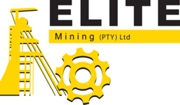Drive Units
ELITE’s new hydraulic drive is an upgraded system which is called a Closed Loop System. A Closed Loop System inherently has good soft – start / stop capabilities, which is achieved by controlling the flow of the oil from the control servos. Oil is circulated from pump to motor, then back to the pump inlet without passing through the reservoir. A percentage of the oil is continuously being removed from the loop and replaced with cool, filtered oil, to prevent overheating of the loop oil.
Chairlift Characteristics vs Hydraulic drives:
Soft-start: Controlled by the rate at which the variable displacement pump moves into stroke.
Soft-stop: Controlled by needle valves which direct the flow of oil from the brakes back to tank, therefore controlling the rate of brake-application.
Roll-back & run-away: Controlled by load holding valves fitted in the motor circuit.
Maximum torque output: The maximum torque output is controlled through fitment of a relieve valve in the hydraulic system. These valves are commonly set to 250 BAR, this pressure is sufficient for the maximum torque required to drive the chairlift.
Advantages of hydraulic drives:
- Soft start of chairlift achieved hydraulically, thus no frequency converter required.
- Drive- and braking systems are dependant of each other, i.e the systems do not work independently.
- The hydraulic motor can keep the chairlift stationary even if the brakes are disengaged.
- Over-speed of chairlift controlled hydraulically.
- Run-away of chairlift prevented using hydraulic valves.
- Roll-back of chairlift prevented using hydraulic valves.
- Minimum electrical controls required.
- Well maintained hydraulic systems can have life expectancies in excess of 20 years.
- All hydraulic components are interchangeable.
- The output speed of the chairlift can be adjusted when necessary.
- Hydraulic drives running at lower pressures (input to hydraulic drive motor) have higher life expectancies than drives running at higher pressures.
- A sequence of hydraulic pressure transducers can be installed in the system for data capturing. Working / loading conditions can be monitored (and stored). Possible faults can be identified; therefore preventative maintenance can be carried out.

